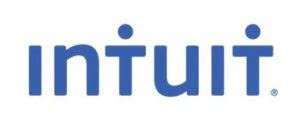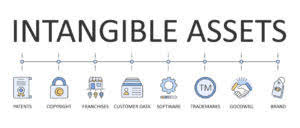
Intangible assets are non-physical assets producing economic value for a company. Recognized by their lack of physical existence, long-term usefulness and the significant challenge involved in accurate valuation, their bearing on a company’s value, while not guaranteed, can hold considerable weight. Current assets can be easily used and converted to cash such as inventory. A key element of social capital – trust – needs to be sufficiently high to ensure that cooperation rather than conflict characterises relationships between agents, especially in large organisations (La Porta et al. 1997). Indeed, trust can foster performance by both increasing commitment and facilitating organisational change, via easier management of collective action (Leana and van Buren 2000, Algan and Cahuc 2013).
Amortization Of Intangible Assets – Definition, Examples, and Calculation
- The idea behind a current asset is that the main benefit of that asset can be received within the next 12 months.
- As per this method, you need to carry the intangible assets at cost less accumulated amortization and impairment losses post the initial recognition of such assets.
- Amortization helps companies allocate the cost of such intangible assets over their useful life, ensuring accurate financial reporting and better decision-making.
- This article will cover the definition of intangible assets, examples, valuation methods, and how intangible assets appear on balance sheets.
- “Amortizing” represents the process of gradually reducing the value of an asset over time.
Understanding and valuing intangible assets are crucial for an accurate assessment of a company’s worth. For business owners, grasping their company’s intangible assets can form strategic decisions and help maximize value. An investor might consider the strengths of a company’s intellectual property rights when investing, as this could indicate the potential for a competitive edge and the possibility of higher returns. Intangible assets can provide long-lasting benefits to a company, but conventional accounting practices do not measure them as creating a long-lived capital asset. There are growing calls for more transparency around intangible assets in financial statements and organisations should be looking beyond just their IP to understand and articulate how their broader intangibles drive business value.
IAS 16 — Stripping costs in the production phase of a mine

The difference between tangible assets and intangible assets is purely based on their physical existence in a business. Thus, you need to recognize only those items as Intangible Assets on the asset side of your balance sheet meeting both the intangible assets definition and recognition criteria. As discussed above, you cannot recognize internally generated intangibles as intangible assets except for a few. Rather, you need to charge such intangibles as an expense at the time when it is incurred.
What Is an Intangible Asset? A Simple Definition for Small Business (With Examples)
In May 2014 the Board amended IAS 38 to clarify when the use of a revenue‑based amortisation method is appropriate. IFRS Sustainability Standards are developed to enhance investor-company dialogue so that investors receive decision-useful, globally comparable sustainability-related disclosures that meet their information needs. The ISSB is supported by technical staff and a range of advisory bodies.
Create a free account to unlock this Template

As a long-term asset, this expectation extends for more than one year or one operating cycle. Companies must also periodically review their intangible asset values for impairment. For example, consider a fictitious acquisition in which one company buys another.
The goodwill is impaired when the business will not be able to recover the amount recorded in the company’s balance sheet, either through use or through a sale. In business terms, “goodwill” is a catch-all category for assets that cannot be monetized directly or priced individually. Assets like customer loyalty, brand reputation, and public trust, all qualify intangable assets as “goodwill” and are non-qualifiable assets. The Financial Accounting Standards Board (FASB) in 2021 came up with an alternative rule for the accounting of goodwill. A 2001 ruling decreed that goodwill could not be amortized but must be evaluated annually to determine impairment loss; this annual valuation process was expensive as well as time-consuming.

This knowledge helps businesses make informed decisions about managing and leveraging their intangible assets effectively. When intangible assets do have an identifiable value and lifespan, they appear on a company’s balance sheet as long-term assets valued according to their purchase prices and amortization schedules. The types of intangible assets with an indefinite life are the assets that generate cash flows for your business for an unlimited period. That is, there is no cap on the period for which such assets are expected to generate cash flows for your business.
- Brands like Coca-Cola and Nike, for instance, prove valuable due to their market recognition and the trust they command among consumers.
- In accounting terms, an intangible asset is a non-physical resource with a financial value that has been acquired by a third party.
- Let’s explore intangible assets, how to calculate their fair value, and how to account for them in your financial documents.
- Using a range of measures of intangible intensity, we find that the estimated productivity gains from the use of intangibles are boosted where trust is high.
- An intangible asset can be identified by its likelihood to generate future economic benefits, its ability to be separated from the entity (i.e., sold or transferred), and its useful life which is greater than one year.
- While many apps perform similar functions, Instagram’s and WhatsApp’s intangible assets contributed significantly to their high valuations.
- The results are robust to controlling for the mediating role of hiring and firing regulations, which in contrast tend to lower the productivity gains from the use of intangibles in production when they are excessively strict.
Intangible Assets Balance Sheet
Tangible assets can more often be readily sold in the market or used as collateral for loans. For example, consider the used car market compared to the “customer loyalty market”. Intangibles management that takes the broadest view of where value resides and how intangibles can be enhanced and commercialised will bring advantages to every organisation. This proactive approach can help a company find its best growth path, while also avoiding pitfalls that might squander the investment it has made.

